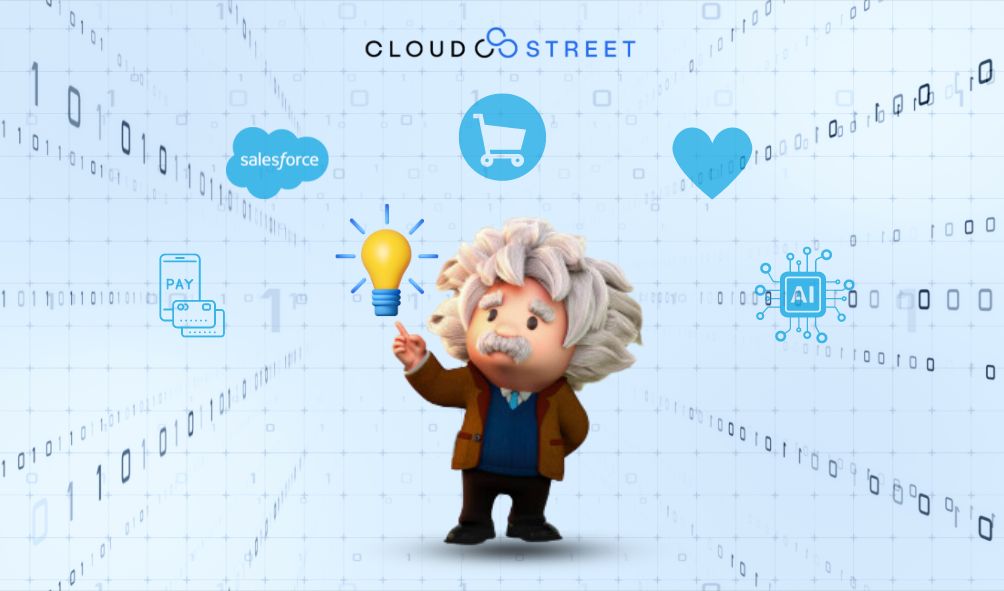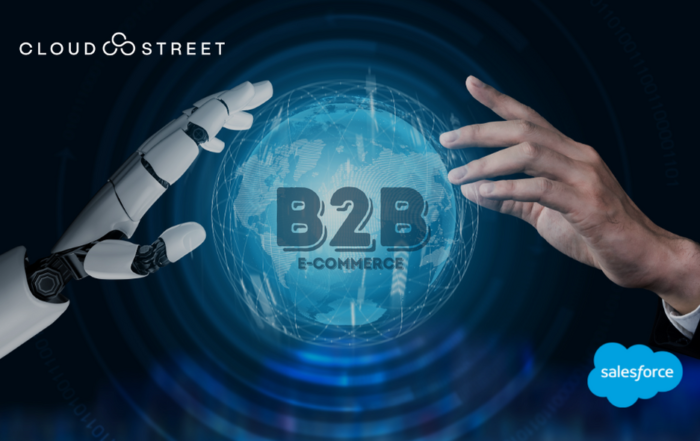
Find Out What 2700 Industry Leaders Have to Say About the State of Commerce
For years, Salesforce has developed a reputation for being a leading provider of the tools that small businesses in particular need to attract and retain new customers. The company’s revenue hit an enormous $31.35 billion in 2023, so it’s safe to say that it is making good on that promise. It’s also why, when a company like Salesforce offers its own insight into where commerce currently stands and where it might be headed, people tend to take notice.
That’s precisely what the recently released State of Commerce Report is all about. It’s the product of direct communication with more than 2,700 industry leaders, who themselves analyzed data from over 1.5 billion buyers around the world. It’s especially relevant to businesses looking to carve out a new level of success for themselves in the era of AI and the highlights alone are more than worth a closer look.
The Relationship Between Digital Channels and Increasing Sales
It’s no secret that commerce as a concept has been on the rise for decades. For as popular as it already was, activity across the sector positively exploded with the onset of the COVID-19 pandemic. Suddenly, when brick-and-mortar retailers were closed indefinitely, people turned to the Internet to meet even their most basic needs. That boost has only continued and is expected to do so moving forward.
The State of Commerce Report indicated that both B2C and B2B organizations expect the “bulk” of their revenue to come from commerce and various digital channels in the future. Just two years ago, commerce made up 31% of the average company’s sales. Right now, that number is an impressive 42%. Over the course of the next two years, those digital channels are expected to make up about 54% of the average company’s revenue – a powerful trend that shows absolutely no signs of slowing down anytime soon.
The Era of AI in Commerce is Upon Us
You can barely turn on the television or open the newspaper these days without seeing a story about the impact of artificial intelligence on our daily lives. Right now, a lot of the attention is focused on AI-powered automation. There are just as many people worried that computer systems are poised to replace human jobs as they are those looking forward to the opportunity to free up their valuable attention to be used on other matters.
But in the world of commerce, AI is a topic of much discussion for different reasons. The way that it can help organizations automate the data collection and analysis process alone is worthy of attention. The types of insights that it used to take literally weeks or even months to collect are now available in near real-time. This leads to better and more informed decision-making across the board – and that’s just the tip of the iceberg.
Indeed, many commerce professionals currently rank AI as one of their top strategic priorities. Having said that, implementation is still considered by many to be a “work in progress.” As per the State of Commerce Report, just 3% of organizations say that they have “no intention to use” AI for whatever reason. 20% are still in the evaluation stage in that they’re aware of AI and its potential, but are still trying to determine if it makes sense for them.
The most exciting number is that 48% of companies say that they’re currently at least experimenting with AI. Part of the beauty of this technology is that there is no “one size fits all” approach to deployment. It’s inherently flexible, meaning it can be a lot of different things to a lot of different people. Many are currently in the midst of finding that out.
29% of those who responded to the survey said that they have fully implemented AI – at least as far as their current definition is concerned. With attention on artificial intelligence only getting stronger, you can expect this number to climb quickly in the not-too-distant future.
The Popularity (and Power) of Mobile Payments
Another prominent trend taking shape over the last several years has to do with mobile wallet payments. Rather than carrying around large, cumbersome wallets and purses filled with multiple credit and debit cards, consumers can get rid of it all in favor of using the device they already have with them wherever they go.
According to another recent study, the worldwide value of digital wallet transactions was $7.5 trillion in 2022 alone. The global mobile payment market itself was valued at $53.5 billion.
As per the State of Commerce Report, as consumers increasingly embrace this technology, many companies are doing the same. Right now, about 64% of companies currently support Apple Pay, for example. This is notable, because it’s one of the more popular forms of mobile payments there is. That puts it ahead of loyalty cards, gift cards, and certainly cryptocurrencies.
70% of businesses also support PayPal as a form of payment. That service itself has its own mobile payment platform.
When taken together, these statistics show that mobile payments are only going to get more popular as time goes on. The technology is already there to act as a foundation. Companies like Apple are building mobile payments into the operating systems on their hardware, and literally billions of people own iPhones alone. As buyers of all types begin to investigate things like mobile payments to see the real benefits they bring with them, those people will begin to demand it as a part of their everyday lives. Businesses will have no choice but to adopt and support that. Thankfully, things are trending in that direction and the process has proven to be a lot more straightforward than some may have assumed it would be.
Building a Better Customer Journey
At CLOUDSTREET, we’ve seen a lot of these trends play out first-hand through our work with various channels. We’ve implemented B2B stores for a wide range of different manufacturers, for example. This includes those operating not only in the industrial space, but also in IT services, consumer goods, and more.
In the end, it’s clear through reports like these that the world of commerce is changing rapidly. But regardless of the shape that evolution takes, one core idea remains the same: commerce is and always will be embedded across the customer journey.
By organically connecting commerce to sales, service, and even marketing, you create a more robust, personal, and ultimately satisfying experience for buyers. That in and of itself may be the most important trend of all.
If you’d like to find out about even more highlights from the recent State of Commerce Report, or if you’d like to talk to someone about your organization’s own needs in a bit more detail, please contact the CLOUDSTREET team today.


